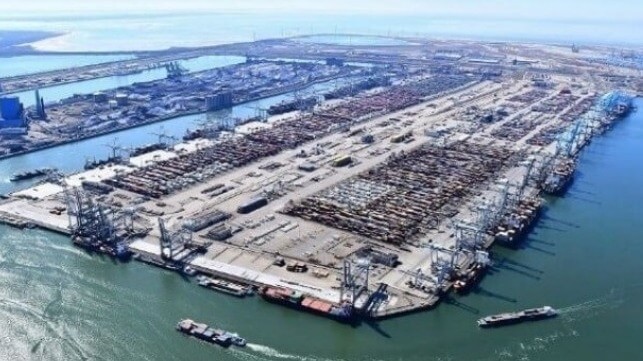Geopolitical and Economic Issues Impact Rotterdam and Antwerp-Bruges

Two of Northern Europe’s leading ports reported first quarter 2024 results citing the ongoing geopolitical uncertainties and the impact on European economies. While Rotterdam remains the larger port overall, it reported a slight decline in overall throughput due to persistent economic issues while Antwerp-Bruges both saw an increase in total cargo throughput and critically pulled nearly even with Rotterdam on container volumes.
Both ports experienced improvements in their container trade despite the impact of the disruptions in the Red Sea. Rotterdam for example reported a slight increase in container throughput for the first time in three years reaching 3,289,000 TEU despite a 24.5 percent decline in ships in January and February which resulted in a nearly 14 percent decline in volumes.
Antwerp-Bruges however reports that after economic uncertainty and inflation led to a global slowdown in demand for container shipping in 2023, container throughput picked up again from February, with March even witnessing the best monthly throughput since March 2021. For the Belgium ports, this resulted in a six percent TEU rise in total container throughput and put them just 2,000 TEU (total of 3,287,000 TEUs) behind Rotterdam.
Executives at Antwerp were also encouraged by an upward trend for conventional general cargo. While it was down nearly eight percent versus the year-ago first quarter, volumes were up nearly seven percent versus the fourth quarter of 2023. They reported that iron and steel remained nearly unchanged and liquid bulk also helped up relatively well while most other goods recorded a decline over the first quarter of 2023.
“The throughput figures show limited imports of raw materials and exports of finished products,” said Boudewijn Siemons, CEO & Interim COO of the Port of Rotterdam Authority. “This tells us that European industrial production is still suffering from high energy prices and low demand from the biggest declining sectors such as construction and the processing and automotive industries. From the growth in container throughput, we see the first signs that world trade is picking up. However, these tentative signs remain highly uncertain due to rising global tensions.”
Rotterdam reports that by March shipping lines and logistics chains had largely adjusted to the Red Sea disruptions. They saw a significant (11.5 percent) increase in the number of arriving ships and volumes from Asia recovered. The diversions around Africa also meant that Rotterdam was receiving more cargo heading to the Mediterranean and an increase in feeder traffic to transport cargo to the Mediterranean destinations.
Antwerp-Bruges also reported that overall sea-going vessel calls were down nearly two percent in the quarter to a total of 4,855 vessels. They, however, highlight efforts to develop long-term capabilities including achieving for the first time the required 16-meter (52.5 foot) draft with a containership. In addition, a new record for the largest container volume handled on a single ship was set in March on the MSC China (240,000 dwt), with 26,201 TEUs.
Antwerp also completed its first methanol bunkering of a sea-going vessel. Maersk’s first methanol-capable ocean-going containership Ane Maersk bunkered 4,300 tons of green methanol and 1,375 tons of biodiesel (B100) during its stay in Antwerp on its maiden voyage.
No comments:
Post a Comment